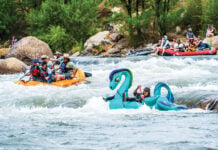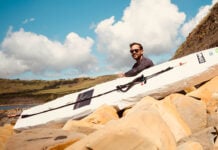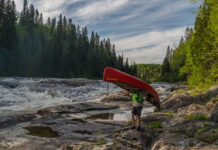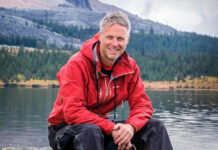The term professional athlete elicits images of the elite—pros that get paid to train and compete at the highest level, making a living doing what they love. In the world of whitewater there are only a handful of athletes who can paddle year round without having to get their hands dirty.
The truth for many of today’s top kayakers is that their days of extreme racing, waterfall hucking and freestyle combos are earned with weeks of hard work slinging beer, pouring concrete, digging holes or saving lives. Take a look at the double lives of these pros to see how top kayakers divide their time between work and whitewater.
How whitewater pros get paid and paddle
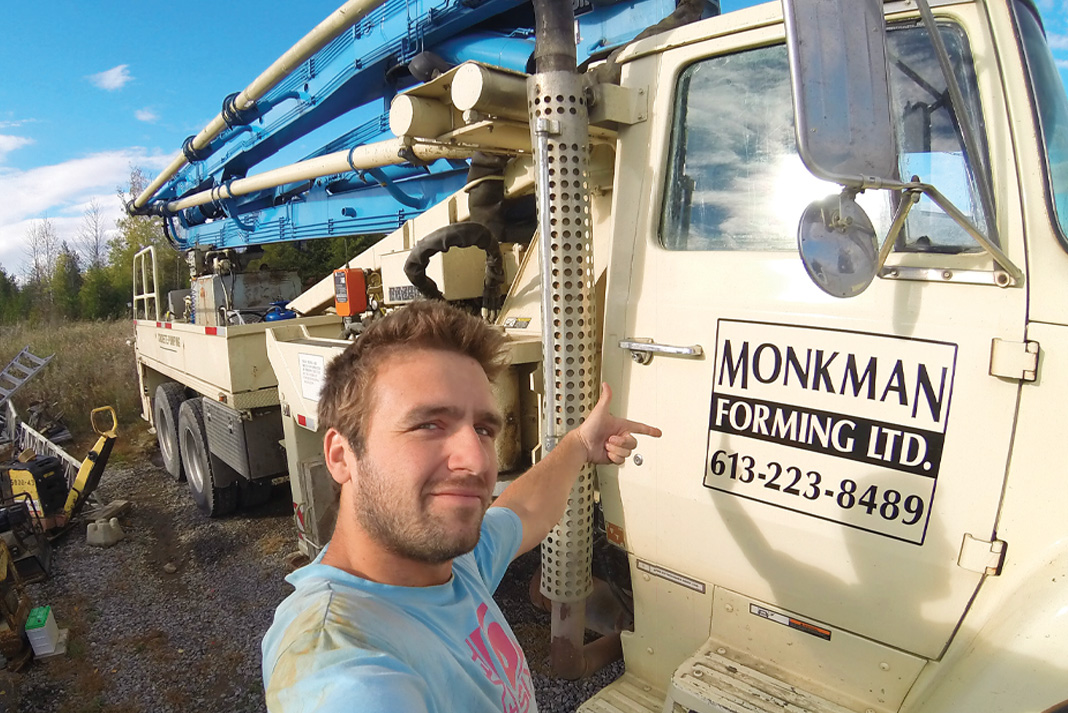
1 Tyler Fox, Concrete Laborer
Tyler Fox doesn’t try to combine his paddling time with a job that pays his bills.
“I typically enjoy buckling down and pounding out a month or so of solid concrete work followed by a couple months of traveling and extensive paddling,” he says.
When the work is hard and the weather is unforgiving, Fox daydreams of paddling. “On really long, hard, shitty days at work, I like to think about getting paid in enjoyment. For example, instead of getting paid x amount of dollars that day, I like to think about how many days of traveling or paddling I can get out of the money that I make during that day.”
Fox supplements his seasonal concrete work with on-water jobs, including kayak instructing, raft guiding and photography, and is currently in New Zealand training hard for the upcoming season of extreme racing.
“I put concrete into places that need concrete in them,” explains Fox, of his less-than thrilling work for Ontario-based company, Monkman Forming. “The crew of people I work with makes it much more enjoyable,” he says of the other kayakers among his concrete co-workers.
“It’s just a quick month here and there to boost the bank account, so that I can head off on another adventure.”
Dream job
“Fireman.”
Wisdom from the workforce
“We need to own money, but we don’t have to let that money own us. If you’re struggling to go kayaking because of your work and you don’t enjoy your job, get one that allows you to do what you really want. You can always go back to your stink-ass job if you can’t handle having all that fun.”

2 Kelsey Thompson, Filmmaker
Kelsey Thompson has made the transition from professional paddler to full-time filmmaker.
“I started shooting video of myself paddling to help improve my technique for competition,” says Thompson. As time went on though, he spent more time on shore shooting his friends kayaking, and soon Thompson discovered that it was the filming itself he had passion for. “When I started shooting cool sticks and leaves I knew something had changed.”
A former Canadian Freestyle Champion, Thompson’s work-to-play ratio has shifted. Though competitive kayaking has taken the back burner, paddling is an integral part of his nine-to-five.
“I shoot and edit films of all kinds, but 90 percent of the content is paddling related,” says Thompson. “I pretty much always paddle when I work.”
His job as an independent filmmaker is a dream come true. “Over the years I’ve learned to love shooting video as much as paddling. I’d say that’s what I like most about my job, the fact that I actually enjoy doing it!”
Dream job
“Filming some other outdoor sport” (skiing is his first love).
Wisdom from the workforce
“A lot of people associate work-life balance with sacrifice but if I have to work an eight-hour day I almost always have time to do something before or afterwards. For me it comes down to motivation—I just need to get up and do it!”

3 Nicole Mansfield, Server
After a day of whitewater in the Pacific Northwest, Nicole Mansfield isn’t sitting back enjoying a cold one—she’s serving them. The hours and flexibility of slinging beer and serving tables at a brewpub in White Salmon, Washington, allows Mansfield to kayak competitively.
“I try to make it to most of the local competitions,” Mansfield says, “but as a trade-off, I usually miss the after party.”
The evening hours of beer pouring fit perfectly around her paddling plans.
“I have a full day for kayaking, skiing, hiking or whatever else before showing up for dinner service at 5
One of the toughest parts of her daily aquatic to terrestrial transformation is telling customers how she got her newest collection of stitches, Mansfield says. “Explaining how I split my forehead open ‘rafting’ Metlako [a nearby waterfall] gets old.”
Dream job
“Big mountain skier, garbage man or helicopter pilot.”
Wisdom from the workforce
“Find a job that allows you to paddle frequently and doesn’t stress you out too much. Set goals for yourself; I find it easier to go to work if I have trips I’m saving for.”

4 Tyler Curtis, Heli Ski Guide
Tyler Curtis works on and off the water to sustain himself year-round. National coach for the Norwegian Paddle Federation, sales agent for Sweet Protection, author, private kayak coach and international paddling guide, Curtis is fully immersed in kayaking.
Recently, though, Curtis has spent his off-seasons submerged in snow instead of water. As a lead helicopter ski guide 200 kilometers from the Arctic Circle in Kittelfjäll, Sweden, his day job has high stakes.
Each day Curtis monitors snow conditions, briefs clients on helicopter safety, plans trip logistics and chooses safe terrain for each heli ski group’s adventure.
The five-time Canadian Freestyle Champion has transferred paddling skills to each new job. “The biggest thing I have gained through kayaking, which I apply to everyday life, is communication and having the social skills to deal with people,” he says. “This comes in handy when working in the tourism and customer service industry.”
Curtis’ lifestyle allows him to continue to be competitive in the freestyle and extreme racing scene. “By focusing on a lifestyle that allows me to work with the things I love, I don’t really see any of it as being work but rather living life to the fullest.”
Dream job
“Owning and operating a timbering company.”
Wisdom from the workforce
“Use your job to facilitate your paddling. Picture kayaking in your future and work toward it—don’t sacrifice everything for paddling today and miss out on a lifetime of paddling.”

5 Evan Garcia, Filmmmaker
While many paddlers toil away on land, there are some who have made the river their office. Evan Garcia is one of those lucky people. As a professional filmmaker, Garcia has established himself as a whitewater storyteller—he’s worked his way into getting paid to paddle every day.
“My job is to kayak at a high level and make films about whitewater and the lifestyle of us river people,” says Garcia.
Though he’s well known for his smooth racing style, waterfall running and filming of remote and exotic multi-day river expeditions, Garcia says it wasn’t easy to get where he is now.
He maintains what he calls a gypsy-kayaker lifestyle by managing his spending. “I don’t buy things I don’t need, splurge, or waste money…money is my one-way ticket to the river,” he says.
Garcia’s dedication has paid off. “I’m proud of myself for making the life choices that brought me here,” he says. “I knew that if I put everything I had into my paddling, maybe someday I could be one of those people that call the river their occupation.”
Dream job
“Owner of a tiki bar on the shores of the South Pacific.”
Wisdom from the workforce
“When I was working outside of the paddling scene I felt something special, every time I got on the water I was so stoked! Don’t lose that spark—when you get out on the river, soak it all in.”

6 Ben Marr, Manual Laborer/Driller
Ben Marr knows work and play go hand in hand. “Hard work for money, hard work for the take-out,” he says, comparing his off-season work to his big water boating.
When he’s not on the water, Marr is drilling holes and planting dynamite for a geo seismic exploration company in Grand Prairie, Alberta.
“My job is physically intense and demanding,” says Marr. “My pay is production based, so the more efficient and speedy I am, the better. I like that.”
He was introduced to the job by fellow paddlers who, like him, saw it as an opportunity to make money and have the flexibility to travel and kayak.
Marr does feel some of the perks of being a pro. “I could support a decent paddling season with my job but because paddling is priority número uno, I take off a lot of time to shred,” he says. That’s where sponsorships come in, providing a financial boost that helps Marr spend more time paddling than digging holes.
Dream job
“Rally car driver or professional lawn mower.”
Wisdom from the workforce
“Move to a place where kayaking is more accessible so you can cut down on time spent getting to and from the river. Make kayaking your priority. If you want it bad enough, you’ll find a way to make it happen.”

7 Shannon Carroll, Emergency Room Nurse
“The biggest skill I was able to take from kayaking and apply to my job is staying calm under pressure,” says Shannon Carroll. “I’m basically paid not to get excited when shit hits the fan. Instead, I have to perform.”
As an ER nurse in Grass Valley, California, she deals with everything from heart attacks to gunshot wounds.
Carroll had been kayaking professionally for eight years when she realized she was tired of being broke every fall.
Since becoming a nurse, Carroll has found “more financial freedom to focus my kayak energies on the specific type of kayaking that is my passion, creek boating,” she says.
The shift work that comes with the job allows Carroll chunks of time off to paddle— she’s currently training for an all-female paddling expedition to Brazil—and working in healthcare has helped her appreciate those opportunities more than ever.
“You can’t put a price on your health,” she says. “I see people everyday, young and old, being diagnosed with life altering diseases and I’m thankful that I’ve had the opportunity to lead the life that I’ve lived.”
Dream job
“Professional singer.”
Wisdom from the workforce
“Whatever you do, put your happiness and health first. Work and school will always be there—travel and live life to its fullest.”

8 Mariann Saether, School Teacher
Well-established in the whitewater world, who knew Mariann Saether is equally proficient in her professional life? With a Masters degree in Medieval History, Saether teaches history, social science, English, Norwegian and math at a secondary school in Norway.
“It is an amazing feeling to be able to guide the youngsters through a pretty important phase of their lives,” she says. She acts as a mentor for many of her students who compete in skiing at a high level, helping them balance training with academics— a feeling she’s familiar with.
“I hope to make it to the Grand Prix in Quebec, but it is the same period as 60 of my students have their exams so it is not likely,” she says.
With an already-lengthy list of paddling accomplishments from freestyle to first descents, Saether is feeling the pull towards competitive paddling.
“The challenge,” she admits, “is to get enough time to paddle, which has left me pretty close to showing up to some of my classes still in my kayaking gear.”
Dream job
“Author.”
Wisdom from the workforce
“Have an end goal but break everyday life down to smaller goals. Do not be too hard on yourself if you cannot do it all every day.”
Ben Marr, Manual Laborer/Driller. | Feature photo: Ryan Creary




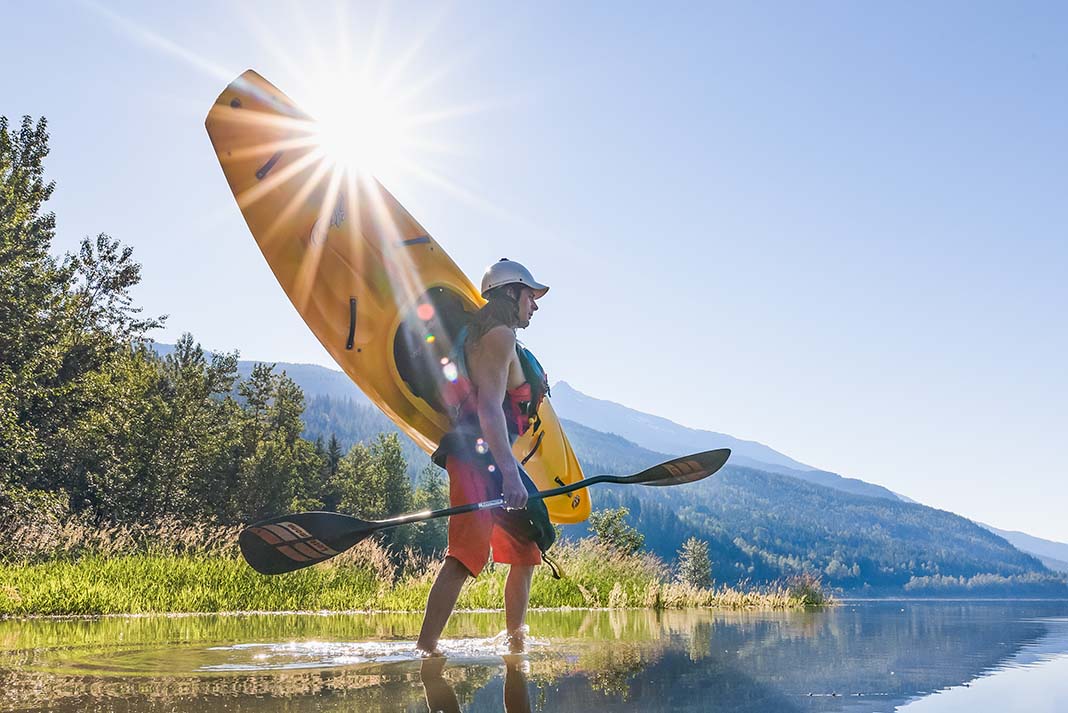
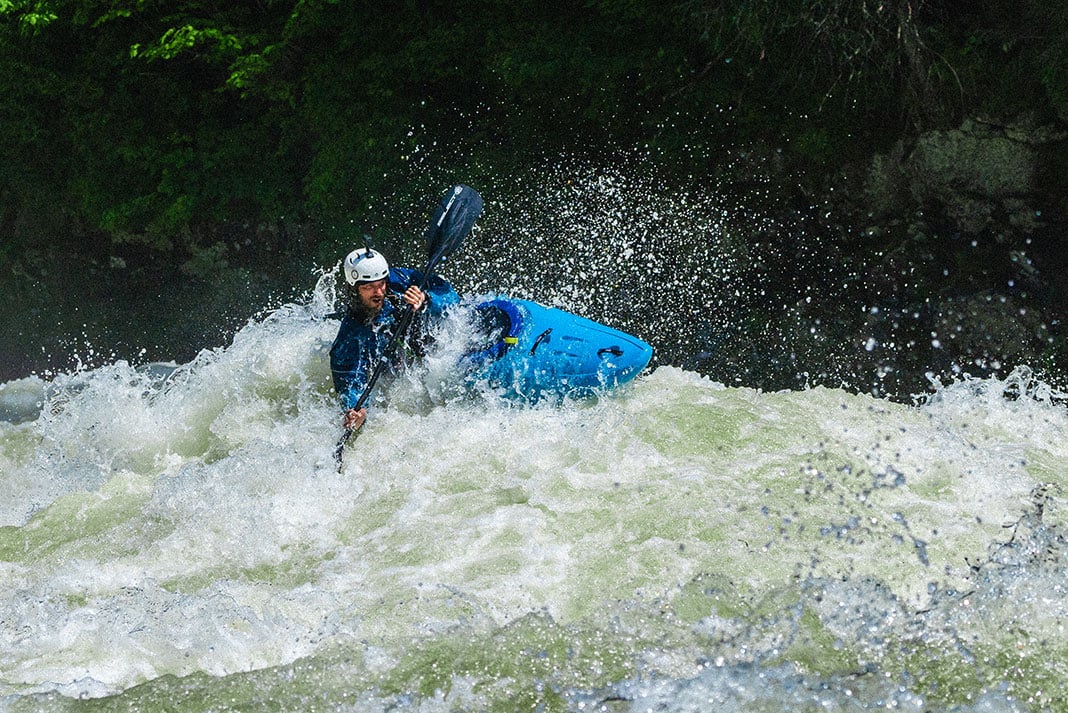
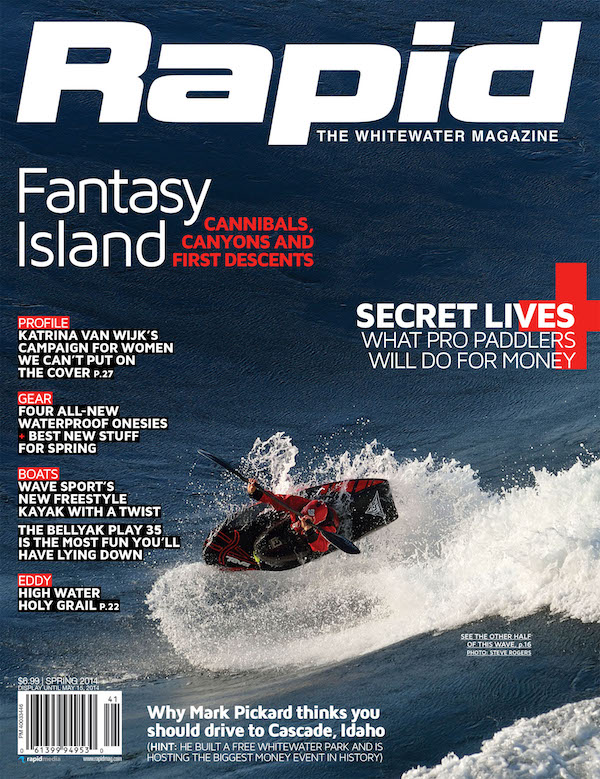 This article was first published in Volume 16, Issue 1 of Rapid Magazine.
This article was first published in Volume 16, Issue 1 of Rapid Magazine. 